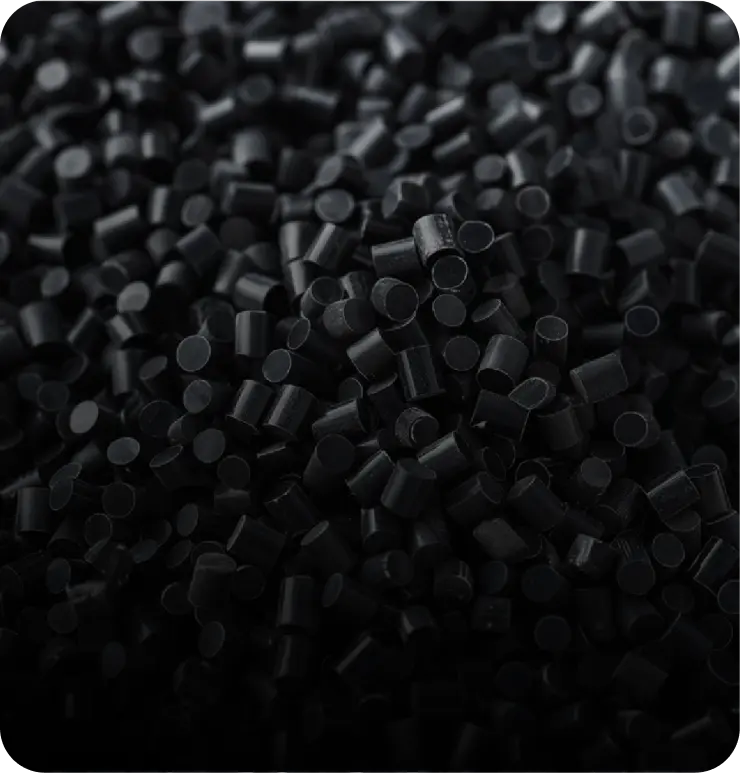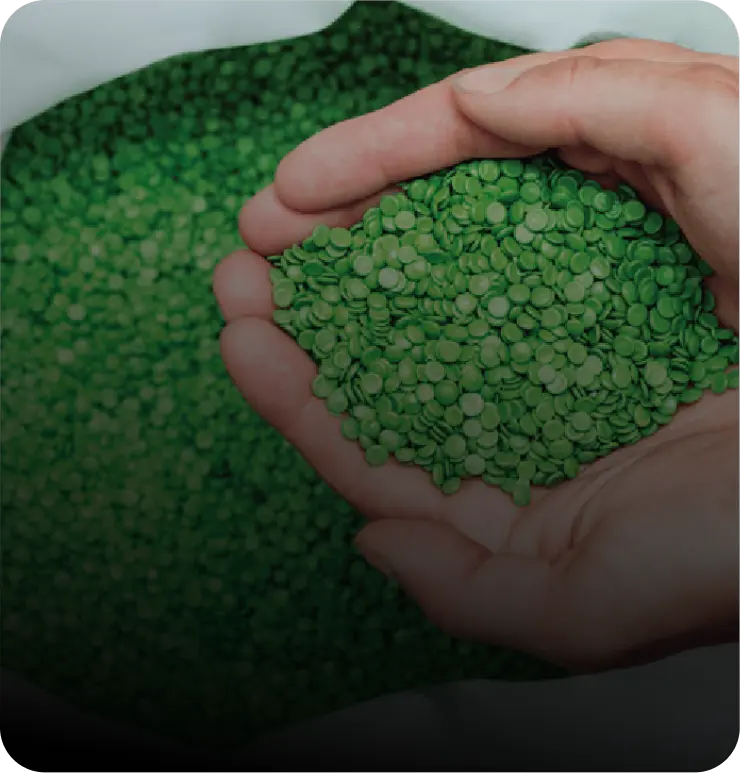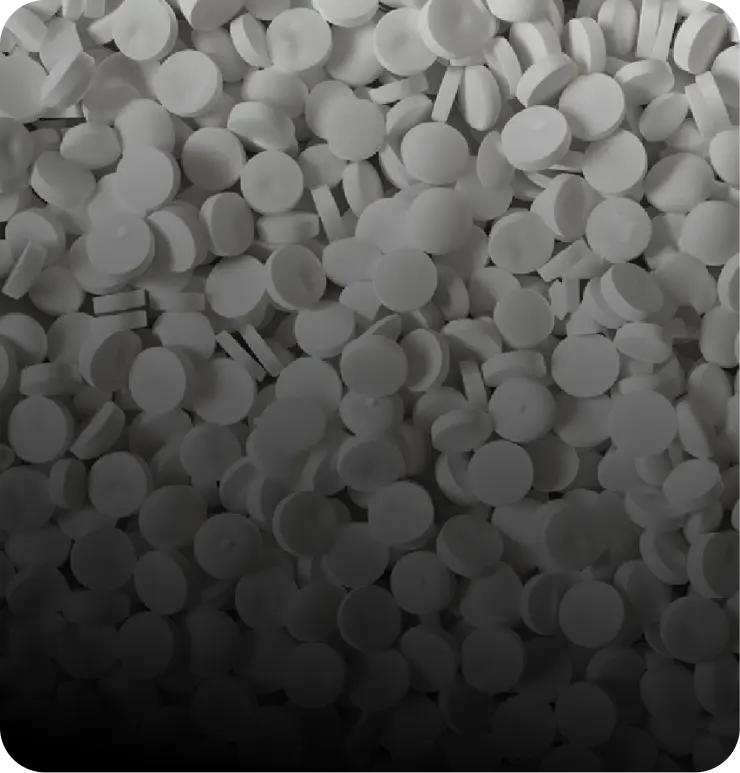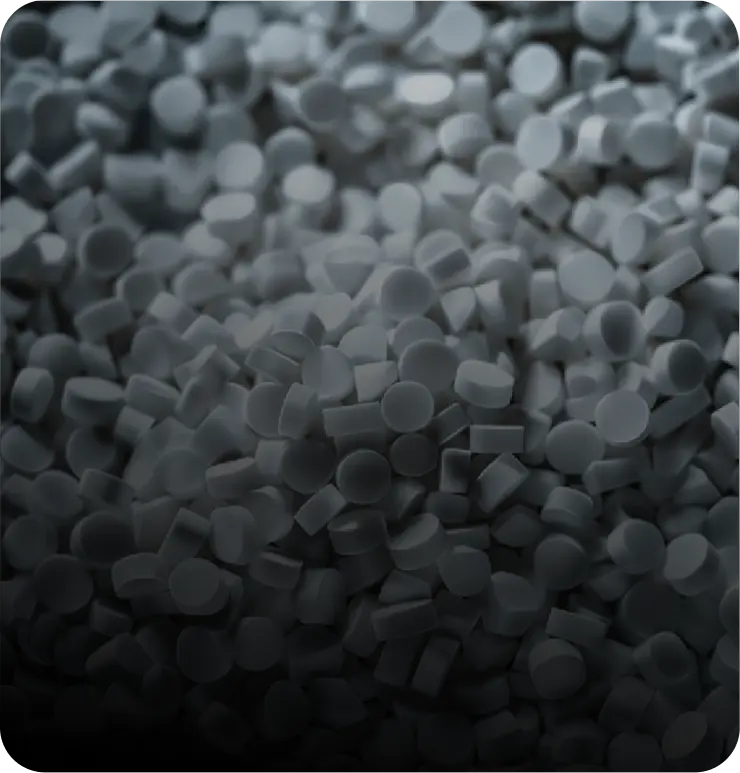EG polymers(Engineering Grades)
Explore our range of engineering resins in prime form, regrinds, and recyclable pieces. We can also provide compounds with fillers. As your trusted recycled plastic material manufacturer, we also offer compounds containing fillers. Our resin selection includes ABS, Nylon 6 and 66, HIPS, POM, PC, and acetal.
What Are Engineering Grades Materials? (EG Polymers)
Engineering-grade materials (EG polymers) are a category of high-performance polymers crafted to address specific requirements across various industrial applications. Compared to traditional polymers, EG polymers have superior properties such as higher mechanical strength, temperature tolerance, chemical resistance, and dimensional stability. Renowned for their lightweight, durability, and functional versatility, these polymers are extensively utilized in the automotive, construction, and electronics sectors.

Engineering Grades Attributes
Our engineering-grade (EG) plastics are designed to meet the rigorous demands of various industries. We offer EG solutions with the following key attributes:
Nylon 6: 5-20 g/10min
PC: 8-15 g/10min
PMMA: 50 g/10min @10Kg
PP homo: 46 j/m
PP copo: 93 j/m
PP copo: 125 j/m
PP homo: 0.9 g/cc
PP copo: 0.9 g/cc
PP copo: 0.9 g/cc
pellets: 0
regrind: 0
regrind: 2%
Grades:
Sources:
Forms:
Color:

EG Applications and Benefits
EG Benefits
Performance:
EG materials can withstand demanding conditions and offer superior mechanical, thermal, and chemical properties.
Durability:
EG materials have excellent impact and resistance, and dimensional stability, ensuring longevity in various applications.
Design Freedom:
Their moldability makes it possible to design complex products, enabling innovation and differentiation.
Sustainability:
Most EG materials are ecofriendly and reduce reliance on virgin materials.
EG Applications and Uses
Aerospace:
Renowned for their lightweight, EG’s are utilized in aircraft cabin components and structural parts.Industrial Equipment:
Due their wear resistance, EG’s are ideal for gears, bearings, and conveyor systems.Healthcare:
They are used for surgical instruments and implantable devices because of their sterilizability, and chemical resistance.Automotive:
They are commonly used in interior, under-the-hood parts, and structural components due to their impact and heat resistance.Construction:
EG’s can stand up to harsh elements, making them a good choice for window frames, and structural components.
Why to Partner With Tradepro?
With a presence across continents, our facilities have storage capacities that exceed 1000 metric tons per location. Leveraging just-in-time inventory programs, we’re able to quickly and precisely meet the needs of our clients
plastic industry
plastics moved in 2023
Explore Our Portfolio of Recycled Plastics
From packaging and automotive to construction and consumer goods, our comprehensive range ensures that businesses within any sector can find sustainable solutions to all of their material needs.
PET (Polyethylene Terephthalate)
From PET flakes to pellets and resin, our PET range can cater to numerous applications. Whether you're producing bottles, packaging or designing sturdy textiles, we offer the perfect PET grade to suit your exact needs.
PCR (Post-Consumer Resin)
Our diverse range of PCR grades, from rHDPE and rPP to rPET, offers the best in versatility and performance. These materials seamlessly cater to various applications, including food packaging, thermoforming sheets, textile fibers, and more.
PE (Polyethylene)
PE is essentially strength, flexibility, and adaptability; all rolled into a single multipurpose material. From LDPE to HDPE and everything in between, our PE range can easily cater to a multitude of applications including packaging, construction, or industrial components.
Polypropylene (PP)
PP is the epitome of versatility, offering options like PP Copolymer, PP Homopolymer, and BOPP in various grades and forms to meet your unique requirements. Whether you need durable packaging, lightweight automotive components, or flexible films, our PP range provides exceptional solutions for diverse applications.
Polyvinyl Chloride (PVC)
PVC excels in providing both flexibility and durability, with options such as PVC rigid and PVC flex available in various grades and forms. Ideal for everything from pipes and fittings to cable insulation and flexible packaging, our PVC range is designed to meet the most demanding industry standards.
Engineering Grades (EG)
Engineering Grades offer advanced materials like PC, ABS, Nylon, and PS in a variety of grades and forms, tailored for high-performance applications. These robust materials are perfect for industries requiring strength, heat resistance, and durability in components for automotive, electronics, and industrial applications.
Additives & Masterbatch
Enhance your products with our range of Additives & Masterbatch, including TIO2, CACO3, and white, black, and color masterbatch options. These formulations can improve the performance, color, and appearance of your end products, providing tailored solutions for your specific manufacturing needs.






